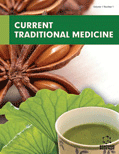Abstract
Development of plant based low cost protein products is need of the hour. Diplazium esculentum, a sustainable and abundantly available edible species, can be utilized to produce such types of products. The present study aimed to explore the production of Leaf Protein Concentrate from D. esculentum and its assessment for various essential properties for food applications. D. esculentum leaf protein concentrate (DELPC), showed minimum protein solubility (9.36%) at pH 4. Water absorption capacity, oil absorption capacity and bulk density were 1.29±0.02 ml/g, 1.32±0.12ml/g and 0.45±0.01g/ml, respectively. Maximum foam capacity (61.72±2.76%) and foam stability (73.73±2.54%) were at pH 2 and 4 respectively. Maximum emulsion properties were recorded at pH 10. DELPC showed a maximum emulsion capacity (56.57±0.93%) and maximum emulsion stability (54.07±1.65%) at the salt concentration of 0.4M and 0.6M respectively. Mineral contents were found in the range of 84.5 to 312.2 mg/kg. IC50 values of DELPC for DPPH., DMPD·+ and ABTS·+ scavenging were determined as 10.23±0.85, 14.67±1.52 and 7.95±1.04 mg/ml respectively. The study supports the suitability of DELPC for various dietary supplement preparations, or as a food additive, to prevent oxidation in food products or even also in protein rich food where antioxidant character is likewise important.
Keywords: Antioxidant, Diplazium esculentum, Functional properties, Leaf protein concentrate.
Graphical Abstract
Current Traditional Medicine
Title:Physicochemical, Functional and Antioxidant Properties of Diplazium esculentum Leaf Protein Concentrate
Volume: 1 Issue: 2
Author(s): Vikas Rana, R.K. Bachheti, Satyabrat Gogoi, P.K. Gupta and Gyanesh Joshi
Affiliation:
Keywords: Antioxidant, Diplazium esculentum, Functional properties, Leaf protein concentrate.
Abstract: Development of plant based low cost protein products is need of the hour. Diplazium esculentum, a sustainable and abundantly available edible species, can be utilized to produce such types of products. The present study aimed to explore the production of Leaf Protein Concentrate from D. esculentum and its assessment for various essential properties for food applications. D. esculentum leaf protein concentrate (DELPC), showed minimum protein solubility (9.36%) at pH 4. Water absorption capacity, oil absorption capacity and bulk density were 1.29±0.02 ml/g, 1.32±0.12ml/g and 0.45±0.01g/ml, respectively. Maximum foam capacity (61.72±2.76%) and foam stability (73.73±2.54%) were at pH 2 and 4 respectively. Maximum emulsion properties were recorded at pH 10. DELPC showed a maximum emulsion capacity (56.57±0.93%) and maximum emulsion stability (54.07±1.65%) at the salt concentration of 0.4M and 0.6M respectively. Mineral contents were found in the range of 84.5 to 312.2 mg/kg. IC50 values of DELPC for DPPH., DMPD·+ and ABTS·+ scavenging were determined as 10.23±0.85, 14.67±1.52 and 7.95±1.04 mg/ml respectively. The study supports the suitability of DELPC for various dietary supplement preparations, or as a food additive, to prevent oxidation in food products or even also in protein rich food where antioxidant character is likewise important.
Export Options
About this article
Cite this article as:
Rana Vikas, Bachheti R.K., Gogoi Satyabrat, Gupta P.K. and Joshi Gyanesh, Physicochemical, Functional and Antioxidant Properties of Diplazium esculentum Leaf Protein Concentrate, Current Traditional Medicine 2015; 1 (2) . https://dx.doi.org/10.2174/221508380102151029152654
| DOI https://dx.doi.org/10.2174/221508380102151029152654 |
Print ISSN 2215-0838 |
| Publisher Name Bentham Science Publisher |
Online ISSN 2215-0846 |
 22
22 1
1
- Author Guidelines
- Bentham Author Support Services (BASS)
- Graphical Abstracts
- Fabricating and Stating False Information
- Research Misconduct
- Post Publication Discussions and Corrections
- Publishing Ethics and Rectitude
- Increase Visibility of Your Article
- Archiving Policies
- Peer Review Workflow
- Order Your Article Before Print
- Promote Your Article
- Manuscript Transfer Facility
- Editorial Policies
- Allegations from Whistleblowers
- Announcements
Related Articles
-
The Cardiovascular Effects of Metformin: Further Reasons to Consider An Old Drug as a Cornerstone in the Therapy of Type 2 Diabetes Mellitus
Current Vascular Pharmacology Relationship Between the Chemokine Receptor CCR5 and Microglia in Neurological Disorders: Consequences of Targeting CCR5 on Neuroinflammation, Neuronal Death and Regeneration in a Model of Epilepsy
CNS & Neurological Disorders - Drug Targets <i>In Vivo/Ex Vivo</i> EPR Investigation of the Brain Redox Status and Blood-Brain Barrier Integrity in the 5xFAD Mouse Model of Alzheimer's Disease
Current Alzheimer Research Na+/Ca2+ Exchange Inhibitors: A New Class of Calcium Regulators
Cardiovascular & Hematological Disorders-Drug Targets Benign Prostatic Hyperplasia and Clinical Prostate Cancer - Two New Components of the Metabolic Syndrome
Current Hypertension Reviews Possible Underestimation by Sports Medicine of the Effects of Early Physical Exercise Practice on the Prevention of Diseases in Adulthood
Current Diabetes Reviews Isolated Perioperative Hypertension: Clinical Implications & Contemporary Treatment Strategies
Current Hypertension Reviews Meet Our Editorial Board Member
Current Cardiology Reviews In silico Prediction of Inhibitory Constant of Thrombin Inhibitors Using Machine Learning
Combinatorial Chemistry & High Throughput Screening Prevalence of Congenital Heart Disease among Children in Khorramabad (West of Iran)
Cardiovascular & Hematological Disorders-Drug Targets Modulation of Vascular Function by Perivascular Adipose Tissue: Sex Differences
Current Pharmaceutical Design Pathogenesis and Management of Intradialytic Hypertension
Current Hypertension Reviews Utilizing Ultrasound to Transiently Increase Blood-Brain Barrier Permeability, Modulate of the Tight Junction Proteins, and Alter Cytoskeletal Structure
Current Neurovascular Research Diffuse Intrinsic Pontine Glioma: New Pathophysiological Insights and Emerging Therapeutic Targets
Current Neuropharmacology Neuropeptide/Receptor Expression and Plasticity in Micturition Pathways
Current Pharmaceutical Design Development of RNA Aptamer-Based Therapeutic Agents
Current Medicinal Chemistry Pathophysiology of Atherosclerotic Plaque Development
Cardiovascular & Hematological Agents in Medicinal Chemistry Recent Patents in CNS Drug Discovery: The Management of Inflammation in the Central Nervous System
Recent Patents on CNS Drug Discovery (Discontinued) Oxidative Stress and Post-Stroke Depression: Possible Therapeutic Role of Polyphenols?
Current Medicinal Chemistry Ivabradine for Treatment of Coronary Artery Disease: From Last Chance Resort to Mainstem of a Reasoned Therapy
Cardiovascular & Hematological Agents in Medicinal Chemistry


























